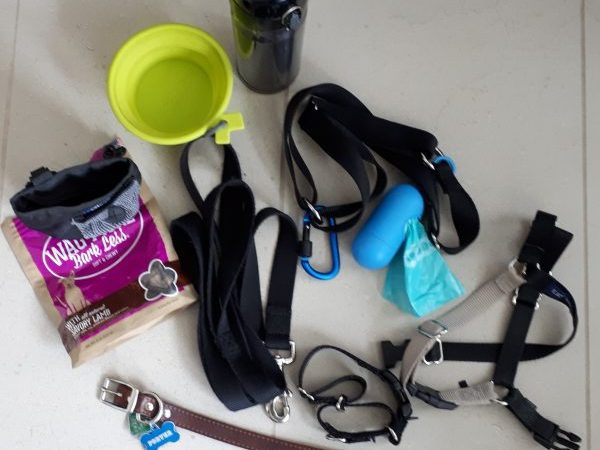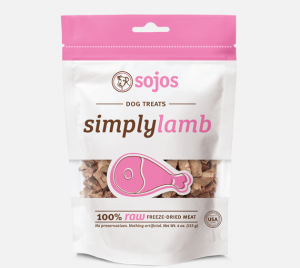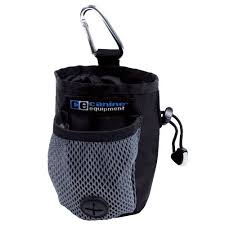Safety is Top Priority
At Good Heels Dog Walking Services safety is our number one priority when client’s dogs are in our care. An important aspect of keeping dogs safe is using proper equipment. By ensuring we select high quality, proper fitting equipment that is appropriate for each individual dog we can maintain a high level of control while minimizing the risk of injury or escape and keeping the dog comfortable during the walk.
The following is a list of equipment we use during our walks and explanations as to why we use them.
Good Heels Dog Walking Equipment Essentials:
 1) Safety Belt (Waist Harness)
1) Safety Belt (Waist Harness)
Every dog walker wears a safety belt with each leash secured onto it with a carabiner. By attaching the dog to the waist as well as holding the leash securely in both hands it will reduce the chances of the dog getting away.
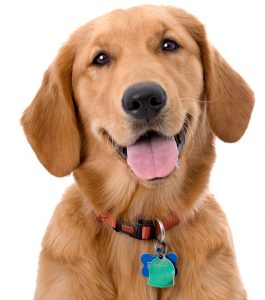 2) Classic Collar With ID Tag and Licence (Provided by the owner- an everyday essential)
2) Classic Collar With ID Tag and Licence (Provided by the owner- an everyday essential)
All dogs must be licensed and wear a tag their collar as required by the city. We also require dogs to wear an ID tag with his or her name, address and phone number. Identification is important in case of an emergency so that the person who finds the dog can easily identify him or her and contact the owners. Tags should be secured to a properly fitted collar.
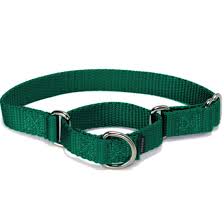
3) Martingale Collar
A Martingale Collar is useful for training and walking. This collar must be accompanied by a classic collar. Martingale collars tighten a small amount when pressure is applied. There is a mechanical stop that limits the amount of tightening to prevent choking and prevents the collar from slipping off the dog’s head so dogs cannot escape from it.
*Exceptions: Small dogs have sensitive tracheas. Do not use a martingale collar for walking a small dog. For a dog with throat disease it may be safer to avoid using a collar (seek Vet advise).

4) Front Connection Harness
A front connection harness is a type of harness that allows you to clip the leash to the centre of the front of the dog’s chest. This is useful to prevent the dog from using his body weight to pull you. These harnesses are very effective in controlling dogs that are strong pullers.
5) Leash
 A standard 6 foot leash is recommended for walking and training. This leash should be leather or nylon. We do not use, nor encourage the use of a retractable leash. Leashes are used to control the dog and keep him or her within a certain distance of the walker. Leashes come in a variety of widths and materials. The stronger/wider leash is used for a larger dog vs lighter /narrower leash for smaller dogs. The leash is attached to both the martingale collar and the front connection harness.
A standard 6 foot leash is recommended for walking and training. This leash should be leather or nylon. We do not use, nor encourage the use of a retractable leash. Leashes are used to control the dog and keep him or her within a certain distance of the walker. Leashes come in a variety of widths and materials. The stronger/wider leash is used for a larger dog vs lighter /narrower leash for smaller dogs. The leash is attached to both the martingale collar and the front connection harness.
6) Treat Pouch & Natural Treats
An important part of every walk is positive reinforcement of good behaviours. We start every walk with a treat to warm the dog up to walking with us. We treat as a reward for many good behaviours throughout our time together including, sit, stay, down, eye contact and any special skill that the individual dog may know or be working on to reinforce that behaviour. The quality of the dog treats we give out is important to us. We select high quality all natural treats. We do not give treats to dogs with food allergies.
7) Water
It is very important to bring water on a walks to keep dogs hydrated. We always bring a water bottle and a water bowl on all our walks. Water is frequently offered to dogs. Home water bowls are filled as needed as the dogs will likely be very thirsty afterwards.
8) Poo Bags
This one is obvious… If one of our client dogs poops we scoop! We make sure we always have extra poo bags on us to clean up after our client’s dogs. One of our biggest pet peeves is people who do not pick up their dog’s poo. It is not only annoying for the person who steps in it but it can also cause health problems for the dogs who comes into contact with it. So please be sure to always pick up your dog’s poop!
Specialized Equipment for Reactive Dogs
1) Gentle Leader or Halti
These are both forms of head collars used as additional control for walking a reactive dog. The handler attaches a second leash to the head collar. This is used to assist the handler in getting the dog to look away from the other dog or whatever the dog is reacting to when the handler pulls gently on the leash. This is only used as necessary if the dog does not respond to “watch me” or “look at me” cue which is used and rewarded as a replacement behaviour for the reactive behaviour. Once the dog looks away, the collar is released and he is always praised or rewarded with a treat.
2) Muzzle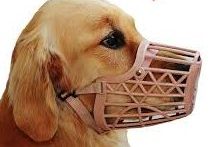
A muzzle should only be used for short duration of time as it limits the dog’s ability to pant, drink or eat. It should not be used to punish behaviour ie. barking or chewing. Muzzles are appropriate in certain situations. They are important equipment to use in an emergency situation in which a dog is injured and may be more likely to bite another dog due to severe pain or fear. A muzzle may also be necessary in a threatening situation in which a dog has a history of biting another dog or person. This behaviour must be dealt with by a specialist but in any situation of worry it is best to muzzle the dog to prevent reoccurrence. If a dog does not behave well for a groomer, a muzzle may be used as a safety precaution.


